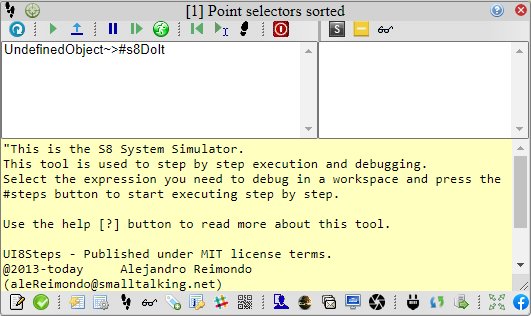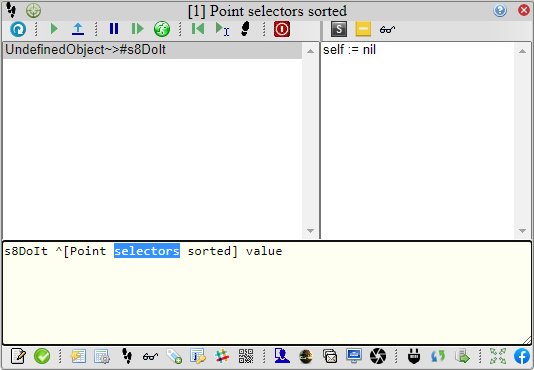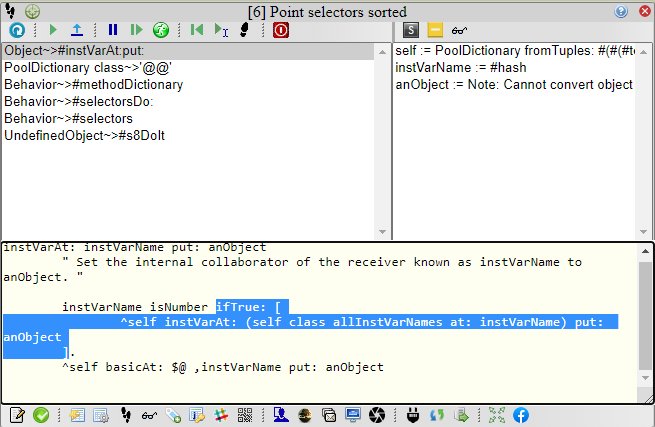


| Action | Description |
| update | update the contents shown in all panes, preserving selections |
| next | advance/execute up to the next message |
| stepOut | execute until exiting the selected frame |
| pause | pause execution (if running animated steps). Note that it has the same effect as the code contain a #halt message. |
| play | start animated steps, running until paused or execution complete |
| run | execute without showing frames until terminated or paused (with #halt) |
| restart | restart the execution of selected frame |
| runToHere | execute (without showing etails) until execution returns to the selected frame or the frame has been removed from frames |
| step | evaluate an atomic stpe of execution e.g. an asignment, an exit from method, activate a block, etc |
| reset | restart execution of the expression (discarding frames) |
| - | - |
| mode | simple/expert - affects the description shown for selected object. In expert mode the object will be rendered as native object showing internal representation. Note that the object attached to a name can be changed (with [accept] |
| unselect | remove selection of current binding/frame |
| inspect | inspect this tool |
| workspace tools | Most buttons acts as normal workspace buttons |
| browse | browse the current selected frame/binding |
| messages | show references of current frame |


